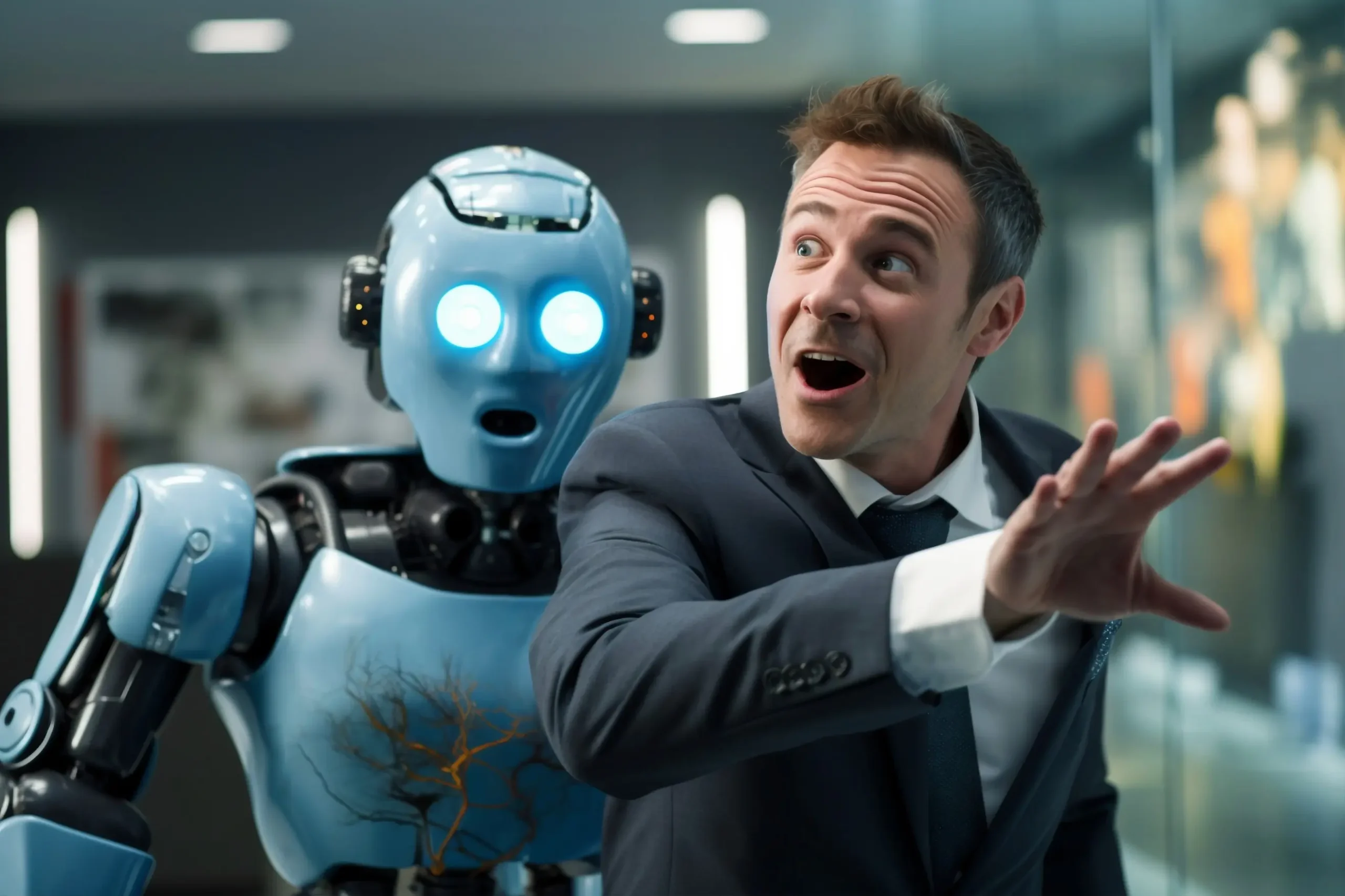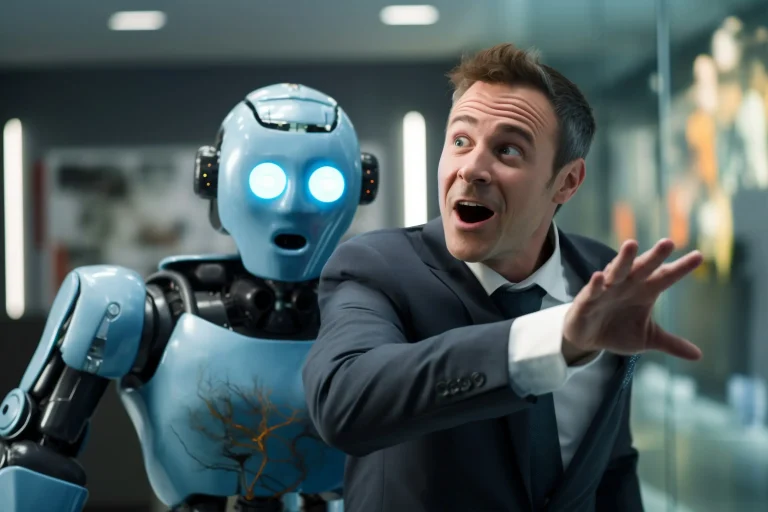Beyond Automation: How AI Chatbots Are Becoming the Voice of Modern Brands

Introduction
In today’s fast-paced digital world, customer expectations are higher than ever. They demand instant responses, personalized experiences, and 24/7 availability things that traditional customer support systems often struggle to provide. Enter smart chatbots, the AI-powered conversational tools that are redefining how businesses interact with their customers.
From resolving simple queries to assisting in complex purchase decisions, chatbots are transforming the way brands communicate. They’re not just automated responders anymore; they’ve evolved into intelligent virtual assistants capable of driving engagement, enhancing user experience, and even boosting conversions.
Let’s dive deep into why smart chatbots are becoming the future of customer interaction, how they’re revolutionizing industries, and what makes them indispensable in a digital-first economy.
1. The Evolution of Chatbots: From Scripted Replies to Smart Conversations
Initially, chatbots were limited to predefined scripts — answering only specific questions with programmed responses. While useful, they lacked context and human-like understanding. Today’s smart chatbots, powered by Artificial Intelligence (AI) and Natural Language Processing (NLP), can interpret intent, learn from interactions, and provide relevant, human-like responses.
They don’t just respond; they understand tone, detect sentiment, and even make recommendations. This evolution means users can have seamless, natural conversations making them feel understood rather than “handled” by a machine.
Example:
A customer asks, “I’m looking for a laptop under $1000 for design work.” Instead of replying with a generic link, a smart chatbot analyzes intent, price range, and purpose, then suggests specific models tailored to design professionals just like a knowledgeable salesperson would.
2. Instant Availability: The 24/7 Digital Assistant
One of the biggest advantages of chatbots is their round-the-clock availability. Unlike human agents who work in shifts, chatbots never sleep. They ensure that your customers are attended to at any hour whether it’s early morning or midnight.
This 24/7 presence not only enhances customer satisfaction but also captures potential leads that might otherwise slip through the cracks due to time zone differences or after-hours inquiries.
Did you know?
According to HubSpot, 82% of consumers expect an immediate response to sales or marketing queries. Smart chatbots make that possible effortlessly.
3. Personalized Interactions That Drive Engagement
Personalization is no longer optional it’s expected. Customers want experiences tailored to their preferences, purchase history, and behavior. Smart chatbots excel in this area by analyzing user data and predicting needs before the customer even expresses them.
They remember previous interactions, recommend relevant products, and even greet returning users by name. This human-like personalization not only builds trust but also makes users feel valued directly influencing conversion rates.
Example:
An eCommerce chatbot might say, “Welcome back, Sarah! Would you like to reorder the skincare product you purchased last month?”
Such thoughtful engagement enhances customer loyalty and promotes repeat purchases.
4. Reducing Response Time and Boosting Efficiency
Speed is everything in digital communication. Traditional customer service channels — like phone calls or emails — often result in long wait times. Smart chatbots reduce this drastically by offering instant replies and automated workflows.
For businesses, this translates to improved efficiency and cost savings. Chatbots can handle thousands of conversations simultaneously, reducing the need for large support teams while maintaining consistent quality.
Moreover, they can filter complex queries and redirect only high-priority or specialized cases to human agents, optimizing workforce utilization.
Quick Fact:
IBM reports that businesses can save up to 30% on customer support costs by implementing chatbots for repetitive tasks.
5. Turning Conversations into Conversions
Chatbots are no longer just tools for answering queries they are conversion catalysts. Through conversational marketing, they guide users down the sales funnel naturally.
A chatbot can:
- Suggest products based on browsing history
- Offer discounts or promotions in real time
- Remind users of abandoned carts
- Schedule demos or consultations
- Collect feedback post-purchase
By doing so, they convert casual visitors into paying customers. For example, if a user lingers on a pricing page, the chatbot might pop up saying, “Need help choosing the best plan? I can walk you through it.” That single message could turn hesitation into action.
Stat to note:
Businesses using chatbots for sales have reported up to a 67% increase in conversions, according to Drift’s Conversational Marketing Report.
6. Seamless Integration Across Platforms
Smart chatbots can be integrated into multiple digital channels — from websites and mobile apps to social media platforms like WhatsApp, Facebook Messenger, and Instagram. This omnichannel presence ensures a consistent brand experience across every customer touchpoint.
Whether a customer interacts via a company website or Instagram DM, the chatbot maintains context and continuity, ensuring conversations are unified and data-driven.
This interconnected experience simplifies the customer journey and enhances satisfaction — a key driver for brand loyalty.
7. Data-Driven Insights for Smarter Decisions
Every interaction a chatbot handles generates valuable customer data — preferences, pain points, and behavioral trends. Businesses can analyze this data to refine marketing strategies, improve products, and enhance customer experiences.
For instance:
- Which products are most inquired about?
- What questions are customers asking before making a purchase?
- At what stage are they dropping off?
Such insights help businesses anticipate customer needs and optimize their operations proactively.
Over time, AI-powered chatbots learn from these interactions, improving accuracy and contextual understanding — leading to better conversations and higher satisfaction rates.
8. Enhancing the Human-AI Collaboration
Contrary to popular belief, chatbots aren’t replacing humans — they’re empowering them. While chatbots handle repetitive, high-volume queries, human agents can focus on complex, emotional, or high-value interactions.
This human-AI partnership boosts productivity, minimizes burnout, and ensures customers receive the best of both worlds — efficiency from AI and empathy from humans.
For instance, when a chatbot detects frustration in a user’s tone, it can automatically escalate the conversation to a live agent. This smooth handoff ensures seamless service without losing context.
9. Cost Efficiency and Scalability for Businesses
Implementing a smart chatbot isn’t just about convenience — it’s a strategic investment. Unlike expanding a customer service team, chatbots scale effortlessly as business demands grow.
They can handle seasonal spikes, product launches, or marketing campaigns without additional manpower. This scalability makes them ideal for startups and enterprises alike.
Moreover, the ROI on chatbots is impressive. By reducing response times, improving satisfaction, and boosting conversions, they pay for themselves quickly.
10. The Future of Smart Chatbots: Beyond Customer Support
As AI continues to advance, the future of chatbots looks even brighter. Next-generation chatbots will go beyond support and sales — becoming proactive business tools capable of handling analytics, sentiment monitoring, and even emotional recognition.
Imagine a chatbot that:
- Predicts when a customer might churn and offers retention offers.
- Reads emotions through text and adapts tone accordingly.
- Provides intelligent insights to the marketing team in real time.
These capabilities will redefine customer engagement, making it smarter, more human, and deeply personalized.
Conclusion
From handling basic queries to driving meaningful conversions, smart chatbots are revolutionizing the landscape of customer interaction. They combine the best of AI and human understanding providing instant, personalized, and data-driven experiences that today’s customers crave.
Businesses that embrace chatbot technology are not just keeping up with the future they’re shaping it. In a world where every interaction matters, a smart chatbot isn’t just a tool it’s a competitive advantage.
As technology continues to evolve, one thing is clear:
Chatbots aren’t the future of customer interaction they are the present, leading us into a smarter, more connected era of digital engagement.
Table of content
- Introduction
- 1. The Evolution of Chatbots: From Scripted Replies to Smart Conversations
- 2. Instant Availability: The 24/7 Digital Assistant
- 3. Personalized Interactions That Drive Engagement
- 4. Reducing Response Time and Boosting Efficiency
- 5. Turning Conversations into Conversions
- 6. Seamless Integration Across Platforms
- 7. Data-Driven Insights for Smarter Decisions
- 8. Enhancing the Human-AI Collaboration
- 9. Cost Efficiency and Scalability for Businesses
- 10. The Future of Smart Chatbots: Beyond Customer Support
- Conclusion










